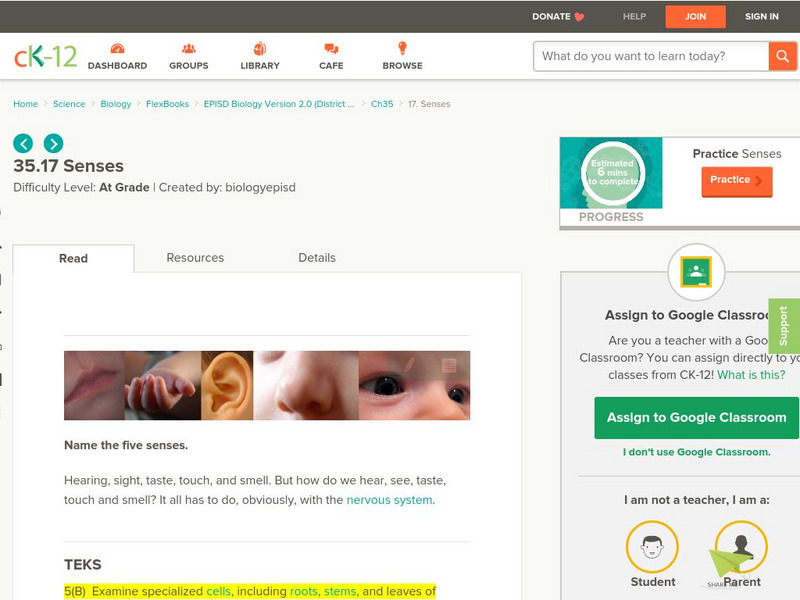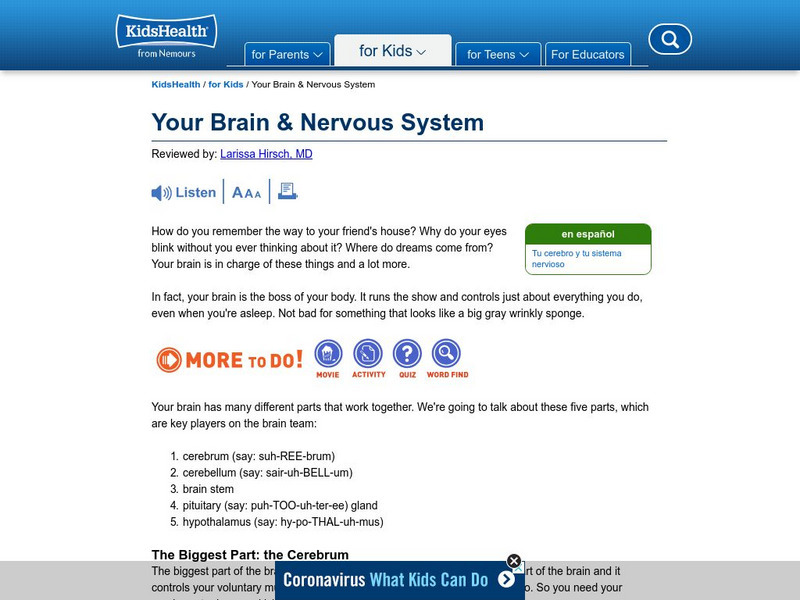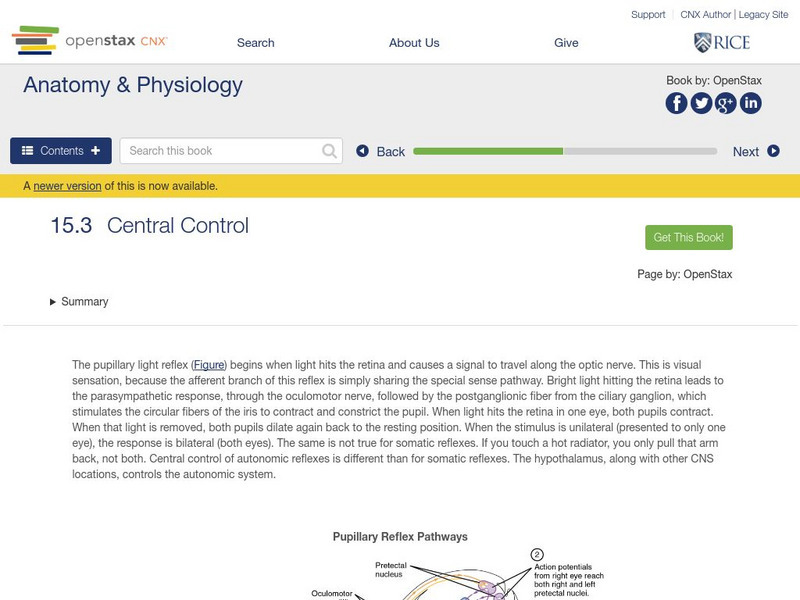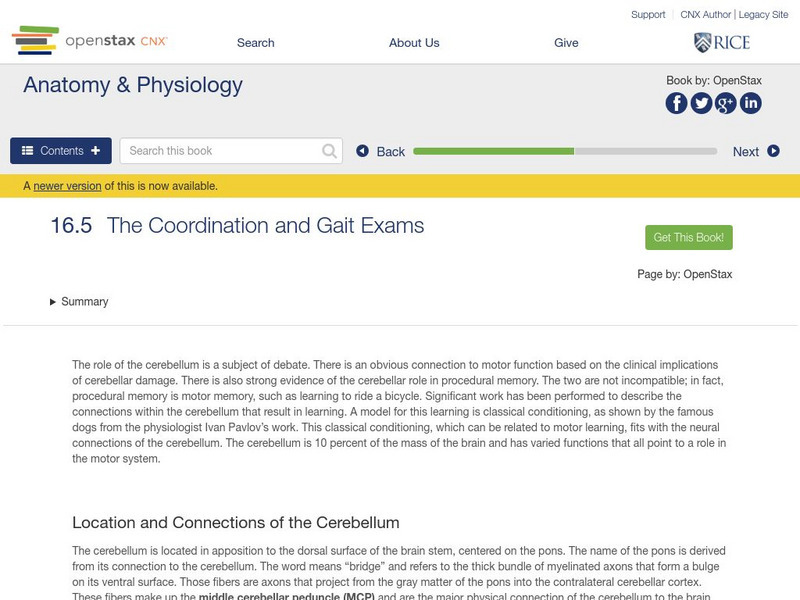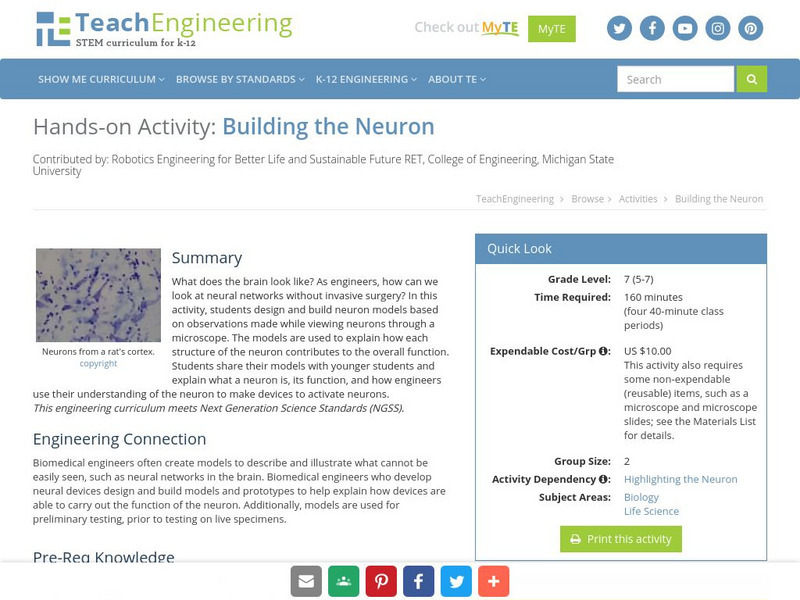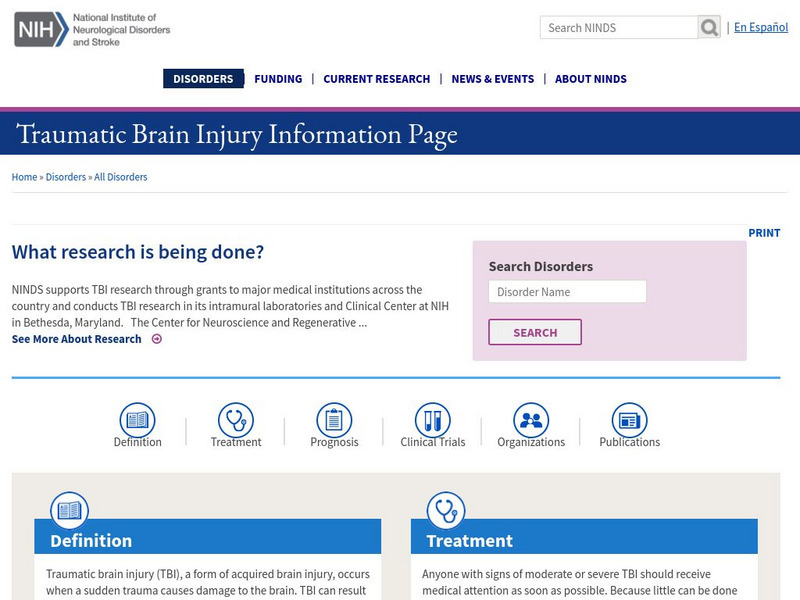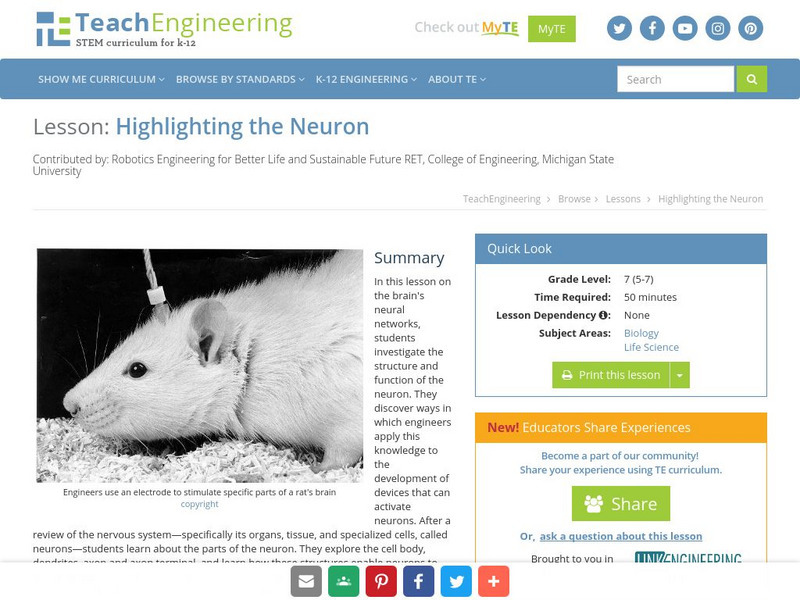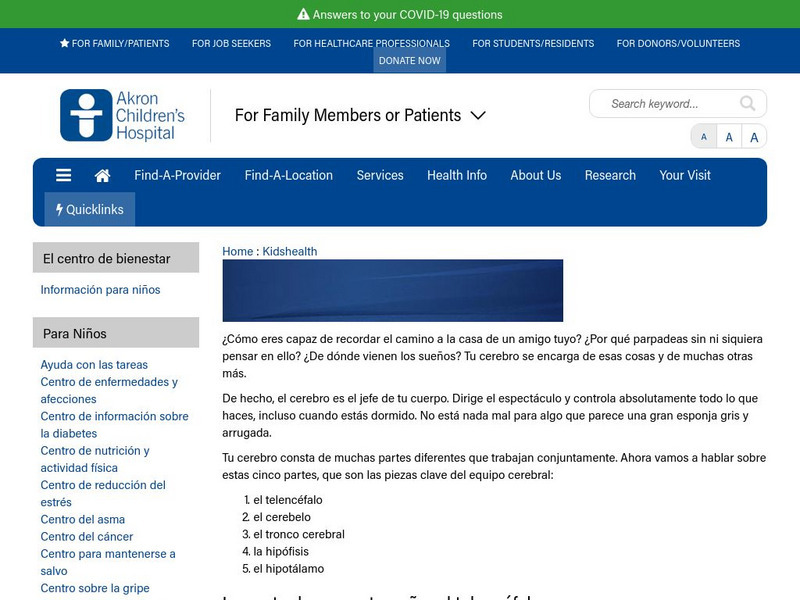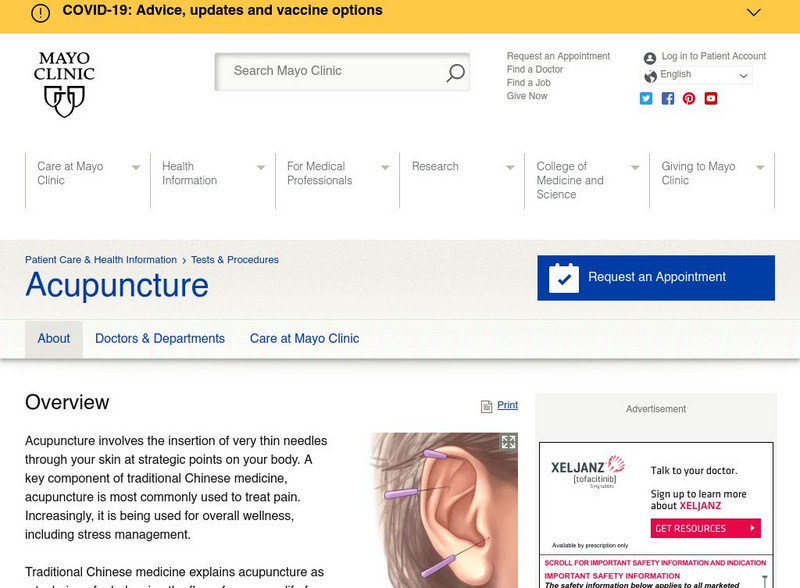Hi, what do you want to do?
Smithsonian Institution
Tween Tribune: What Happens When You Get a Concussion?
Article explains the science of concussions.
CK-12 Foundation
Ck 12: Episd: Nerve Cells
[Free Registration/Login may be required to access all resource tools.] Understand the structure of a neuron and identify different types of them.
CK-12 Foundation
Ck 12: Senses
[Free Registration/Login may be required to access all resource tools.] The following online tutorial explains how sensory stimuli are perceived and interpreted.
Curated OER
Kids Health: The Brain Is the Boss
What weighs 3 pounds at maturity and is faster than any computer? If you don't know then use this site about the brain. Get great information and diagrams about the brain. Available in Spanish.
OpenStax
Open Stax: Anatomy & Physiology: Central Control
Students investigate the role of higher centers of the brain in autonomic regulation.
OpenStax
Open Stax: Anatomy & Physiology: The Action Potential
Students will learn the components of the membrane that establish the resting membrane potential, and find out the changes that occur to the membrane that result in the action potential.
OpenStax
Open Stax: Anatomy & Physiology: The Sensory and Motor Exams
Students learn the arrangement of sensory and motor regions in the spinal cord in order to understand a sensory and motor exam. They will also understand the clinical indications of common reflexes.
OpenStax
Open Stax: Anatomy & Physiology: The Coordination and Gait Exams
Students learn about the relationship between the location of the cerebellum and its function in movement in order to understand the processes of coordination and gait exams.
TeachEngineering
Teach Engineering: A Tasty Experiment
Students conduct an experiment to determine whether or not the sense of smell is important to being able to recognize foods by taste. They do this by attempting to identify several different foods that have similar textures. For some of...
TeachEngineering
Teach Engineering: Building the Neuron
In this activity, students design and build neuron models based on observations made while viewing neurons through a microscope.
TeachEngineering
Teach Engineering: How Do Sensors Work?
Through six lesson/activity sets, students learn about the functioning of sensors, both human and robotic
American Academy of Family Physicians
Aafp: Benzodiazepines: Side Effects, Abuse Risk & Alternatives
This article from the American Family Physician journal assesses and discusses the adverse effects of a class of prescription depressants called benzodiazepines. Learn about dangerous complications and side effects, and also learn about...
NASA
Nasa: The Brain in Space
This educators guide shows students how the body's brain, spinal cord and network of nerves control the activities of animals and humans.
National Institutes of Health
Ninds: Coma and Persistent Vegetative State Info Page
Loads of answers to just about any question you may have about comas. This site discusses what coma is, whether there is treatment, what the prognosis might be like, research on comas, and more.
National Institutes of Health
Ninds: Traumatic Brain Injury Information Page
Description of traumatic brain injury, which can lead to a coma. Discusses what TBI is, how it is treated, what the prognosis might look like, and research that is being done in the movie.
BBC
Bbc: Scotland: Brainsmart
Beginners guide to how the human brain works and suggestions for taking care of it, memorizing numbers, remembering names, managing stress, and more. Take a trip inside and see what happens when it learns something new.
TeachEngineering
Teach Engineering: Highlighting the Neuron
In this lesson on the brain's neural networks, young scholars investigate the structure and function of the neuron. They discover ways in which engineers apply this knowledge to the development of devices that can activate neurons....
Other
Health Talk Online: Chronic Pain
This comprehensive resource contains individual video interviews with medical professionals and a number of people who have experienced chronic pain. What is chronic pain? What different approaches are used to manage pain? What type of...
Akron Children's Hospital
Akron Children's Hospital: Kids Health: El Cerebro Y El Sistema Nervioso
Learn about the different parts of the brain. The page is also available in English.
Mayo Clinic
Mayo Clinic: Acupuncture
An overview of the practice of Chinese traditional medicine known as acupuncture. Contains a good sized article with helpful information along with links to related articles and additional resources.
Other
Do Something: 11 Facts About Organic Food
Learn about the differences between conventionally grown food and organic for both people and the environment. Includes important statistics about nutrition and pesticides.
BiologyWise
Biology Wise: A Detailed Description of the Anatomy of Spiders
Describes anatomical features of a spider, including its external structure, eyes, mouth parts, digestive system, circulatory system, respiratory system, nervous system, reproductive system, and its spinnerets.
Khan Academy
Khan Academy: Action Potential Velocity
Brain cells called neurons send information and instructions throughout the brain and body. The information is sent via electro-chemical signals known as action potentials that travel down the length of the neuron. These neurons are then...
University of Washington
University of Washington: Neuroscience for Kids: Hallucinogenic Mushrooms
Article explaining what hallucinogenic mushrooms are, their history, the two main types, and the effects they have on human behavior and the nervous system.
Other popular searches
- Human Biology Nervous System
- Central Nervous System
- Human Nervous System
- The Nervous System
- Nervous System Crossword
- Nervous System Activities
- Peripheral Nervous System
- Nervous System Experiments
- Brain and Nervous System
- Nervous System Lesson Plan
- Nervous System in Humans
- Nervous System Word Search







